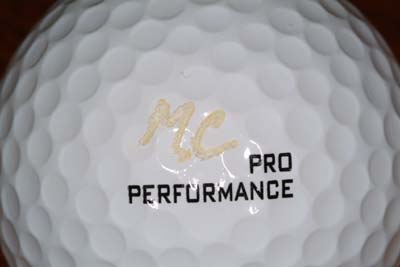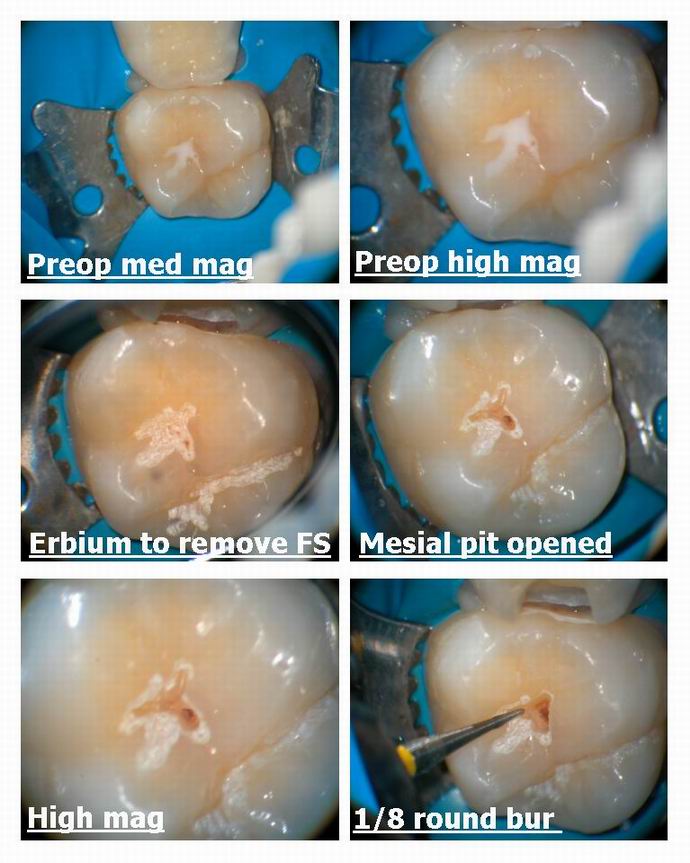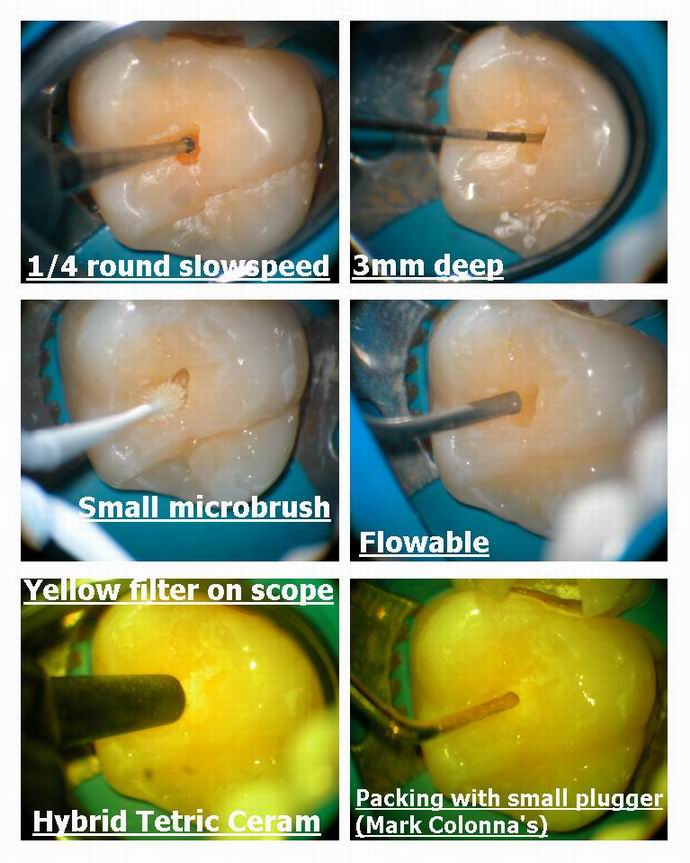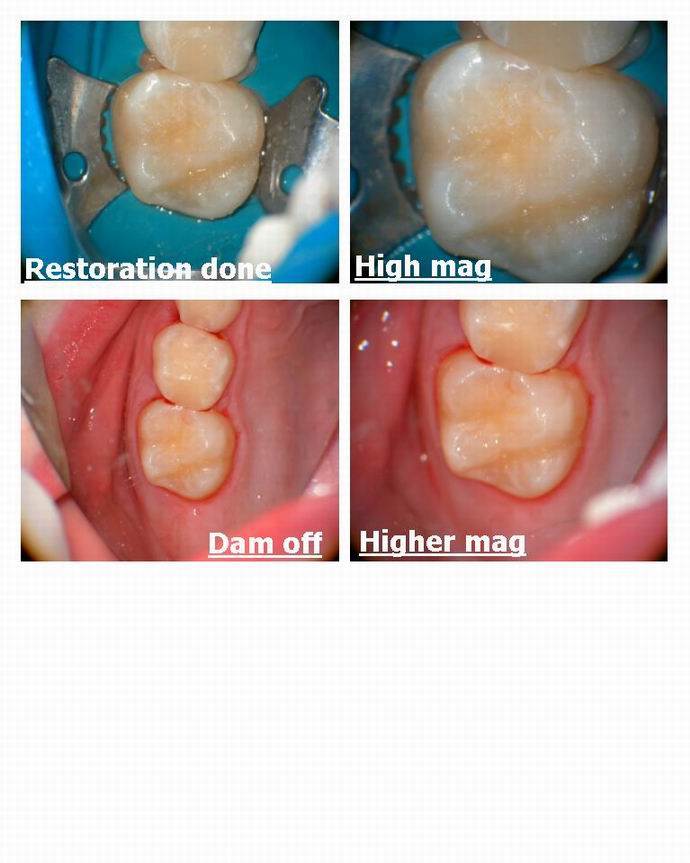Forum Replies Created
-
AuthorPosts
-
2thlaserSpectator
Ok, Some people mark their golf balls with sharpie markers, I decided that mine will be laser marked, and guided. I will share with you later how the performance of the ball is improved. All I know, is the ball never complained, and felt nothing! 5.5W, 80%air, 50%water, G-4 tip. FORE…………..
Mark
AnonymousSpectatorMark,
I’m not surprised your golf balls would be ‘laser MARKed’ :biggrin:
Just don’t tell me you’re using the HeNe laser to line up your putts!
2thlaserSpectatorActually Ron, I am considering making a putter with a laser pointer in it, you can see on the green, above the ball to aim with. I don’t think there are any USGA rules against it is there? Or Royal and Ancient rules?
Mark
SwpmnSpectatorHey folks,
Lean real close to your monitor and you can almost hear a roar – yes, the roar of thunderous applause as Dr. Bob Gregg just laser-guided a bomb right into the Bull’s Eye of the target area!!!!!
Congratulations Dr. Gregg!!!!!!
Al
AnonymousSpectatorInteresting abstract-
Pulsed erbium laser ablation of hard dental tissue: the effects of atomized water spray versus water surface film
Freiberg, Robert J., IMC Associates; Cozean, Colette D., ENO Vision, LLC
Publication: Proc. SPIE Vol. 4610, p. 74-84, Lasers in Dentistry VIII, Peter Rechmann; Daniel Fried; Thomas Hennig; Eds.
Publication Date: 6/2002
Abstract:
It has been established that the ability of erbium lasers to ablate hard dental tissue is due primarily to the laser- initiated subsurface expansion of the interstitial water trapped within the enamel and that by maintaining a thin film of water on the surface of the tooth, the efficiency of the laser ablation is enhanced. It has recently been suggested that a more aggressive ablative mechanism, designated as a hydrokinetic effect, occurs when atomized water droplets, introduced between the erbium laser and the surface of the tooth, are accelerated in the laser’s field and impact the tooth’s surface. It is the objective of this study to determine if the proposed hydrokinetic effect exists and to establish its contribution to the dental hard tissue ablation process. Two commercially available dental laser systems were employed in the hard tissue ablation studies. One system employed a water irrigation system in which the water was applied directly to the tooth, forming a thin film of water on the tooth’s surface. The other system employed pressurized air and water to create an atomized mist of water droplets between the laser hand piece and the tooth. The ablative properties of the two lasers were studied upon hard inorganic materials, which were void of any water content, as well as dental enamel, which contained interstitial water within its crystalline structure. In each case the erbium laser beam was moved across the surface of the target material at a constant velocity. When exposing material void of any water content, no ablation of the surfaces was observed with either laser system. In contrast, when the irrigated dental enamel was exposed to the laser radiation, a linear groove was formed in the enamel surface. The volume of ablated dental tissue associated with each irrigation method was measured and plotted as a function of the energy within the laser pulse. Both dental laser systems exhibited similar enamel ablation rates and comparable ablated surface characteristics. The results of the study suggest that, although the manner in which the water irrigation was introduced differed, the mechanism by which the enamel was removed appeared basically the same for both dental laser systems, namely rapid subsurface expansion of the interstitially trapped water. It is the conclusion of this study that if the proposed hydrokinetic effect exists, it is not effective on hard materials, which are void of water, and it does not contribute in any significant degree in the ablation of dental enamel.
AnonymousSpectatorI posted this under the Gerenal Erbium Forum but thought it might also be good here ( I’m still one of those who are happy with their Waterlase )
Interesting abstract-
Pulsed erbium laser ablation of hard dental tissue: the effects of atomized water spray versus water surface film
Freiberg, Robert J., IMC Associates; Cozean, Colette D., ENO Vision, LLC
Publication: Proc. SPIE Vol. 4610, p. 74-84, Lasers in Dentistry VIII, Peter Rechmann; Daniel Fried; Thomas Hennig; Eds.
Publication Date: 6/2002
Abstract:
It has been established that the ability of erbium lasers to ablate hard dental tissue is due primarily to the laser- initiated subsurface expansion of the interstitial water trapped within the enamel and that by maintaining a thin film of water on the surface of the tooth, the efficiency of the laser ablation is enhanced. It has recently been suggested that a more aggressive ablative mechanism, designated as a hydrokinetic effect, occurs when atomized water droplets, introduced between the erbium laser and the surface of the tooth, are accelerated in the laser’s field and impact the tooth’s surface. It is the objective of this study to determine if the proposed hydrokinetic effect exists and to establish its contribution to the dental hard tissue ablation process. Two commercially available dental laser systems were employed in the hard tissue ablation studies. One system employed a water irrigation system in which the water was applied directly to the tooth, forming a thin film of water on the tooth’s surface. The other system employed pressurized air and water to create an atomized mist of water droplets between the laser hand piece and the tooth. The ablative properties of the two lasers were studied upon hard inorganic materials, which were void of any water content, as well as dental enamel, which contained interstitial water within its crystalline structure. In each case the erbium laser beam was moved across the surface of the target material at a constant velocity. When exposing material void of any water content, no ablation of the surfaces was observed with either laser system. In contrast, when the irrigated dental enamel was exposed to the laser radiation, a linear groove was formed in the enamel surface. The volume of ablated dental tissue associated with each irrigation method was measured and plotted as a function of the energy within the laser pulse. Both dental laser systems exhibited similar enamel ablation rates and comparable ablated surface characteristics. The results of the study suggest that, although the manner in which the water irrigation was introduced differed, the mechanism by which the enamel was removed appeared basically the same for both dental laser systems, namely rapid subsurface expansion of the interstitially trapped water. It is the conclusion of this study that if the proposed hydrokinetic effect exists, it is not effective on hard materials, which are void of water, and it does not contribute in any significant degree in the ablation of dental enamel.
Glenn van AsSpectatorAndrew: I think that you might want to look at the posts here again on the web site regarding Biolase vs Continuum (Hoya Con Bio) and decide which one that you want to get.
I have some set opinions based on my experiences but will tell you that the Biolase machine works and is perhaps a little sexier, the Hoya Con Bio laser is not as well marketed but is very stable.
Both are used by various people here and I dont think either one has an advantage with respect to speed of cutting. THe both cut by the same mechanisms mainly H20 particles absorbing the laser energy and expanding and as they do ablating a piece of tooth.
Which one you get has to do with price , reliability, stability, training , support and whether you prefer the delivery options with the Con Bio or the Biolase.
Sales reps are sales reps and they all will say anything to get the sale. Its their job, and mine is to say ask for both to come in and do a demo and remember to ask about warranties, and in addition TRAINING.
I have a bias toward hoya con bio, and you know that I do but dont expect to have one laser cut really fast compared to the other.
It just isnt so, and as for soft tissue……..check out the cases and you will see that the laser cuts.
I did a osseous recontouring on a patient today with anesthetic and it bled but was controllable for the post and core buildup. Gonna send that one to Ron for posting on the web site.
ALl the best…………
(Hey Allen did I stay civilized?))
GrinGlenn
Glenn van AsSpectatorHey Ron ……..is there an echo in here……….
I have been saying that for a while.
Biolase does an excellent job marketing their product and Imean it……….they do a wonderful job.
The company is very aggressive in getting FDA approvals.
They throw great parties, and are Number 1 in sales.
It doesnt work on hydrokinetics………
The Hoya Con Bio cuts soft tissue very very nicely and with minimal bleeding.
IT cuts similarly to the Biolase in enamel.
THe Hoya is extemely stable. For those that doubt me , privately email me and I will give you a list of 6 people to phone, email etc. who have both the Waterlase and the Hoya Con Bio in their office and they can tell you which one they prefer.
Ask Bill Greider about his preferences and why.
Glenn
Glenn van AsSpectatorIS this a porcelain ball mark??
Grin…………
Very nice……..you crack me up…….what does the MC stand for…….
Miserly cheapskate…….
Master of Composites…….
Mister Congeniality……..
Missed Chip……….
I know I know……..
Misses Continuum……….(now known as Hoya Con Bio)
See you and that was good.
Glenn
ASISpectatorHi Ron,
Thanks for posting the abstract.
Andrew
ASISpectatorHi All,
Thanks for the input. Just what I needed to confirm my thoughts about the matter.
Tannis is a lady by the way. Not that it makes a difference in truthful representation.
Thanks and regards to all.
Andrew
Robert Gregg DDSSpectatorNice job Ron!
Bob
2thlaserSpectatorGlenn, FYI, I talked to Keith about the remarks of the rep, so he is aware. I feel that the ConBio unit is a very good laser, especially after talking to Stu, and his experiences with the new unit. Let’s just stop bashing eachother, and companies, and just learn what we can do clinically here. I really don’t care what each laser company does, I agree Biolase has had some training problems, BUT, in their defense, they are working that problem out. I think the meeting between you and Keith has gone a long way towards some of that. This post is really directed towards everyone….Let’s just get about the business of teaching eachother. That is what is important here, that is “the laser guided bomb that hits the target for me”!!! Have a great weekend everyone.
Mark
Glenn van AsSpectatorHi Mark: Dont misunderstand me, in that I really wasnt pointing any fingers at anyone with respect to training or what any rep says.
I have mentioned numerous times that any rep be it Continuum , Biolase , Opus Dent or any of the soft tissue laser companies will try to take advantage of any opportunity to promote their product or tear down the other. ITs human nature.
Andrew as for the 3 minute thing and turning off that is erroneous. The unit goes into standby if you dont press down on the foot pedal for 3 minute it will automatically go off. If you use it continuous or even intermittent in that time it will not shut off. Its a safety measure.
Finally, I am beyond bickering with Keith or Biolase , in fact I got an email from Keith yesterday laughing about the t-shirt that he gave me because i sent him the photos and i promised to buy him a beer in Anaheim.
We agree to disagree on certain issues but remain mutually respectful of the role each plays in the laser field.
All the best Mark……….editing my videos today.
Glenn
Glenn van AsSpectatorHi folks: with all this bone cutting stuff going on , I thought I would show you a simple thing I did this week.
THis maxillary molar had a bubble in the Fissure sealant which was present and noticed. I saw a shadow under the FS with the scope at high mag and felt that there was either decay under the fissure sealant or there was decay as a result of the bubble.
Interestingly enough when we took out the FS at 30 Hz and 80 mj (2.4W) with water and a 600 micron tip which is very fast, there was a dark spot very small right where the bubble was.
Now at this point I decided to use a very small round bur (high speed) 1/8th round bur by Brassler and opened up the groove and the spot was into the dentin and actually expanded as it got through into the dentin.
I know Mark doesnt like burs but in these small cases his spoons (which are wonderful and small) wont actually fit into the pit. I am trying to remain as conservative as possible.
I opened up the Distal lingual groove because I hate going back in 6 months and doing that. I dont like using the opaque FS, I would rather use a flowable ,as I can see when that leaks.
In the mesial pit I put flowable in the base and then composite plugged in with one of Mark Colonnas small pluggers which fit nicely. They really are nice instruments.
Hopefully someone else will confirm this for me. THe final pics are there for you to see the result. Nothing earthshattering but amazing how a bubble in the FS can lead to decay huh.
Cya
Glenn



-
AuthorPosts
